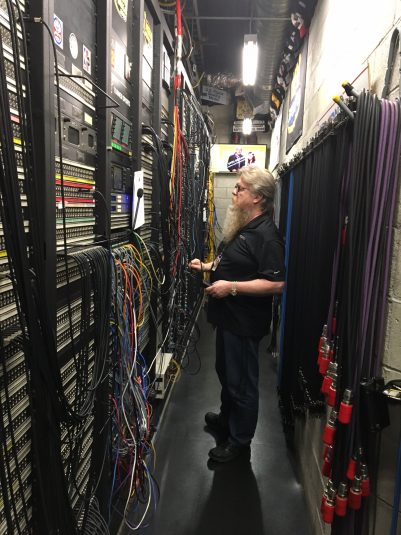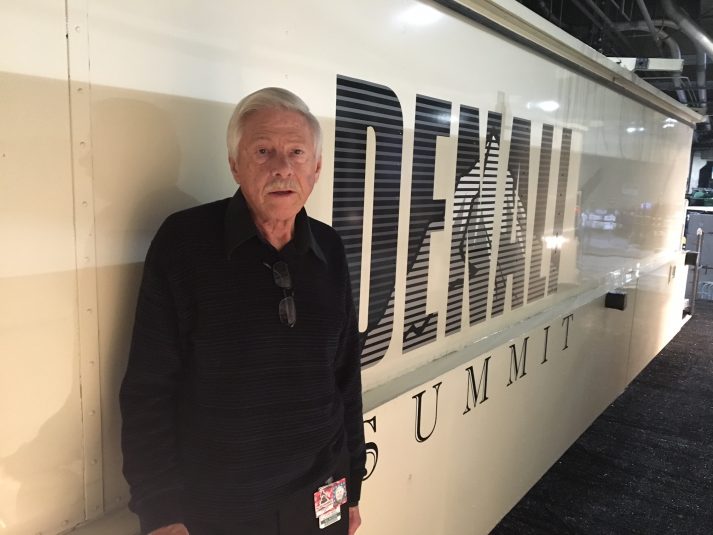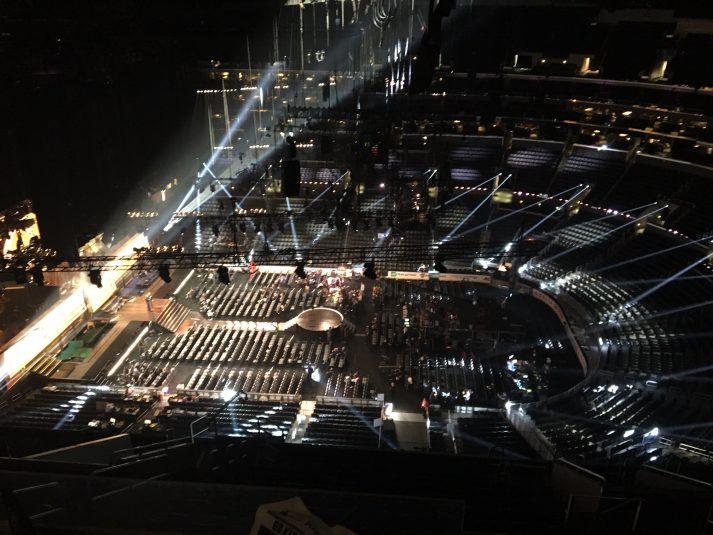Venue Profile: Staples Center Stays One Step Ahead
Video and audio systems — and the arena itself — are designed for efficiency and flexibility
Story Highlights
Steve Thrap doesn’t count time in years and months like everyone else. Instead, the VP of broadcast services at Los Angeles’s Staples Center since it opened in October 1999 measures time’s passage in seasons and events. At the home of three major-league teams — the NHL Kings and the NBA Lakers and Clippers, more than any other sports venue in the U.S. — as well as the WNBA’s Los Angeles Sparks and, for the past 16 years, the Grammy Awards, he has a lot to count. The arena’s popularity as a music venue garnered it Pollstar’s Best New Major Concert Venue Award for 1999, Arena of the Year awards in 2000 and 2001, and nominations for that plaque each year since.
“The building was designed from the beginning to handle high-profile events back to back,” says Thrap.
Exemplifying that was CBS’s Grammy Awards show last Sunday, a little more than a week after the NHL All-Star game took place there. In 2013, the Grammy Awards were loading in on literally the same day that the NBA All-Star Game was played. At times, such events are not only tightly sequenced but also spill out onto the larger campus that the Staples Center anchors: the 4 million-sq.-ft. L.A. Live development that was built around it beginning in 2005 and has hosted 11 years’ worth of ESPN’s sprawling X Games franchise.
Nerve Center
As grand as the establishment is, its nerve center is an unassuming cinderblock room steps away from the Staples Center’s main truck bay. The Cable Termination Room, referred to casually as the patch room, is more like a long, narrow corridor, barely 4 ft. wide, where all the heavily wired facility’s AV and low-voltage signals converge. That includes 3.8 million ft. of broadcast-related cable, including triax wiring for cameras. There is also another 148,000 ft. of internal single-mode and SMPTE fiber within the building.

The Cable Termination Room’s massive matrix reflects its sobriquet as the FATS (Feed Anything To Somebody) room.-
The wiring infrastructure takes video feeds from 34 camera positions throughout the Staples’ bowl into the patch room, where they can be routed to up to seven truck bays (four inside the building and three more at the top of the ramp), each with its own media panels, for broadcasters like Fox, TNT, ESPN. and Canada’s Dome Productions covering the NBA and NHL teams. In addition, 19 dedicated ENG panels located throughout the arena allow local TV newsgathering crews complete access to the facilities at all times.
The truck bays constitute a huge jigsaw puzzle, one that has to be kept open and available always. “For deliveries,” notes Thrap. “We’ve got to get our beer.”
The patch room is a stationary version of what he calls a FATS trailer, an acronym for Feed Anything To Somebody, an aspirational aphorism he attributes to George Hoover, CTO of NEP Group, one of a number of companies whose production units are regular visitors.
Camera and Video
Camera positions are strategically located, allowing any of the networks and local stations — such as KTLA and KABC — to cover any sport. The cameras tie into the venue’s 720p control room, where four CCUs and a Ross switcher dominate. “The only things that move are the handheld cameras,” Thrap points out. “Hockey shoots from above, and basketball shoots from down low.”
Converting the venue from one sport to another is a ballet performed by the Staples operations crew. Going from hockey to basketball is the most complex, requiring two hours and 15 minutes to lay two floors over the ice, which gets built each year over Labor Day weekend and stay until the Kings are eliminated. Reversing that process takes just under an hour.
The Staples Center’s Panasonic Live 4HD scoreboard was installed in 2010. HD video in 16:9 format is shown on the four Panasonic 22- x 14-ft. 3-in. LED displays, each comprising 6-mm video elements using a black SMD 3-in-1 package for additional contrast. The screens have horizontal/vertical viewing angles of 140 degrees/140 degrees, a contrast ratio of 8,000:1, and a brightness level for all boards reaching 2,000 nits.
Four additional 6-mm LED displays on the underside of the LED board provide viewing for fans in courtside seats, who were previously unable to view replays on the center-hung LED display. Four other 10-mm–pitch LED videoboards measuring 13 ft. 9 in. x 14 ft. 3 in. keep fans informed of team stats, scores, game-clock status, and more. The boards are also video-capable and can be integrated so that programming appears seamlessly across all eight screens. According to Thrap, plans for signage include replacing all the ribbon boards and digital displays on the upper and middle suite-level soffits.
Big Sound
Although many sports venues have upgraded their sound systems to music grade in the past decade, the Staples Center’s sound pretty much started at that level. That’s perhaps not surprising, considering that, early in his career, Thrap worked with legendary record producer Snuff Garrett, whose discography includes Tanya Tucker and Sonny & Cher. The main system’s eight clusters of JBL VT4889DPDA three-way powered line-array modules are in the same ballpark as the JBL touring-sound system brought in for the Grammy Awards. Each house cluster contains between 11 and 13 cabinets in each hang, and two fill clusters covering the end seating areas during basketball games contain four VT4889DPDA cabinets each. Both basketball and music make good use of the system’s four subwoofer clusters, each with six JBL VT4880A dual 18-in. speakers.

VP of Broadcast Services Steve Thrap: “The fans who come here are getting much more knowledgeable about sound and video. It’s our job to stay ahead of them.”
House systems include Shure Axient wireless microphones, a Clear-Com intercom system with 32 RS-701 single-channel beltpacks, and a Telex TR-800 wireless base station with eight TR-800 wireless beltpacks. A recent addition is the Soundcraft Vi1 digital live-sound console. It uses the same Vistonics touchscreen user interface as the Studer Vista broadcast consoles. EQ and dynamics settings are stored and recalled as needed for NHL, NBA, or special events.
In fact, every aspect of the Staples Center’s live and broadcast systems is designed for efficiency but with strategic aspects always in mind. For instance, audio in the patch room uses ¼-in. phone jacks rather than the smaller TT-type jacks because the ¼-in. jacks are readily repairable. Thrap notes the willingness of Staples Center owner Anschutz Entertainment Group CEO Philip Anschutz to fund the venue generously with careful stewardship of its operating costs.
Fiber Future
A 48-port network switch is near the bottom of one of the massive racks, just above the earthquake pads they rest on, but what it represents is closer to the top of the venue’s media-technology future. The fiber that sat dark for nearly the venue’s first decade was a prescient inclusion, as was the SMPTE capability that was also a bit ahead of its time. Today, Thrap says, demand for networked signal transport is growing quickly. Dante compatibility hasn’t made it into the mix yet, but he says it’s coming.
The patch room also serves as a line of technical demarcation. He says the venue is strategically cautious about the extent of what it can offer broadcasters. “We pretty much stop at providing actual production services,” versus support for the broadcasters’ own productions there, he explains, citing the potential for liability, although onsite systems and platforms, such as Pro Tools, can be used for postproduction services.
Staying on top of technology is part of the Staples Center’s DNA, and Thrap intends to see that it stays that way as he hands over the reins sometime this summer, when he plans to retire.
“Everything keeps changing; it’s the only thing you can count on,” he says. “But the fans who come here are getting much more knowledgeable about sound and video. It’s our job to stay ahead of them.”

